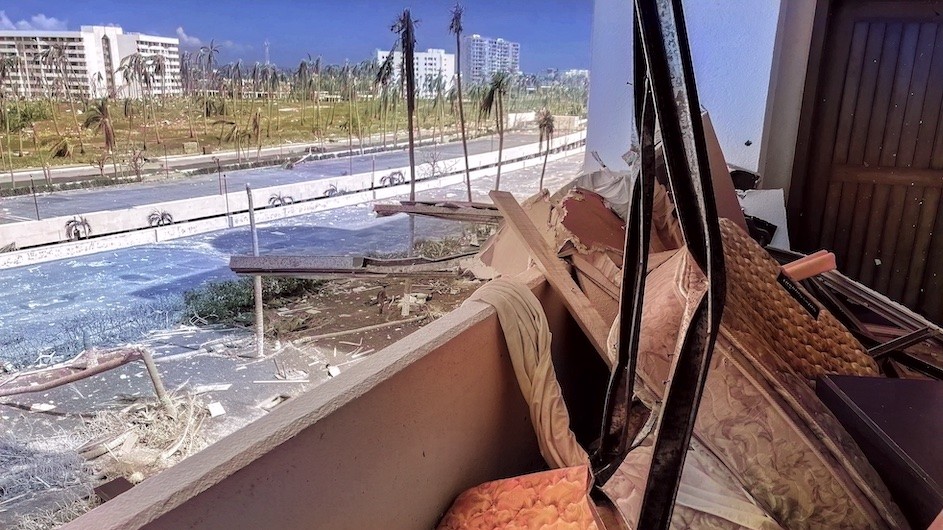Will Events Like Hurricane Otis Become More Common?
Rapidly intensifying hurricanes are hard to predict. Research suggests that climate change may be making them more frequent.

Hurricanes are powerful storms that bring about destructive winds, rain, and storm surges. The strength of hurricanes is typically defined through their intensity, or the sustained maximum wind speeds. In general, hurricanes gradually intensify and then decay, though their intensity can fluctuate through their lifetime due to various factors.
Hurricanes can sometimes undergo rapid intensification, which by definition, is an intensification of 35 knots, or 40 miles per hour, in a 24-hour time window. To give a sense of how fast this intensification is, 35 knots is the difference between a Category 1 hurricane and a Category 3 hurricane! Extreme rapid intensification can be particularly dangerous, especially if the rapid intensification occurs right before landfall, since there is not much time to evacuate coastal areas that are at risk for weather-related hazards.
Unfortunately, just last week, Hurricane Otis did just this, as Otis achieved Category 5 intensity right before it made landfall near Acapulco, Mexico. Otis had one of the most extreme intensification rates ever observed. Around midnight, on October 24, Otis was a weak tropical storm, with an intensity of 50 knots. Just 24 hours later, Hurricane Otis became a Category 5 hurricane with an intensity of 145 knots. That is an intensification rate of 95 knots in 24 hours—a rate nearly 3 times faster than the general definition of rapid intensification!
A common question is whether rapid intensification events, such as those like Otis, will increase in frequency with global warming. While this is a topic still undergoing active research, models generally predict that rapid intensification events will become more frequent with greenhouse emissions caused by human activity, and a recent study noticed an uptick in the intensification rates of Atlantic hurricanes. One possible explanation is that with human-related greenhouse emissions, the ocean is becoming warmer and the atmosphere is becoming more favorable for the rapid intensification of hurricanes.
Unfortunately, this is not the end of the bad news. In general, forecasting rapid intensification events is very difficult. In fact, Otis was one extreme example of this! Most notably, all of the commonly used hurricane models failed to predict Otis’s rapid intensification into a major hurricane. The spectacular failure of our hurricane models in predicting Otis’s intensification will have to be analyzed in post-mortem studies. Regardless, an increase in the frequency of rapid intensification events suggests that hurricane forecasting may also get more challenging with global warming. This is, unfortunately, the state of affairs, and only increases the need to bolster the resilience of coastal communities across the globe.

Jonathan Lin is a National Science Foundation postdoctoral research fellow at the Lamont-Doherty Earth Observatory at Columbia’s Climate School. His research interests include tropical cyclone prediction/predictability, dynamics of tropical intraseasonal variability, and troposphere-stratosphere coupling. He will be starting as an assistant professor at Cornell University’s Earth and Atmospheric Sciences Department in fall 2024.

Suzana Camargo is the Marie Tharp Lamont Research Professor in the Ocean and Climate Physics Division of the Lamont-Doherty Earth Observatory, at Columbia’s Climate School. She has worked at Columbia since 1999. She holds a PhD in Physics from the Technical University of Munich.
This article is editorially independent of Columbia News.